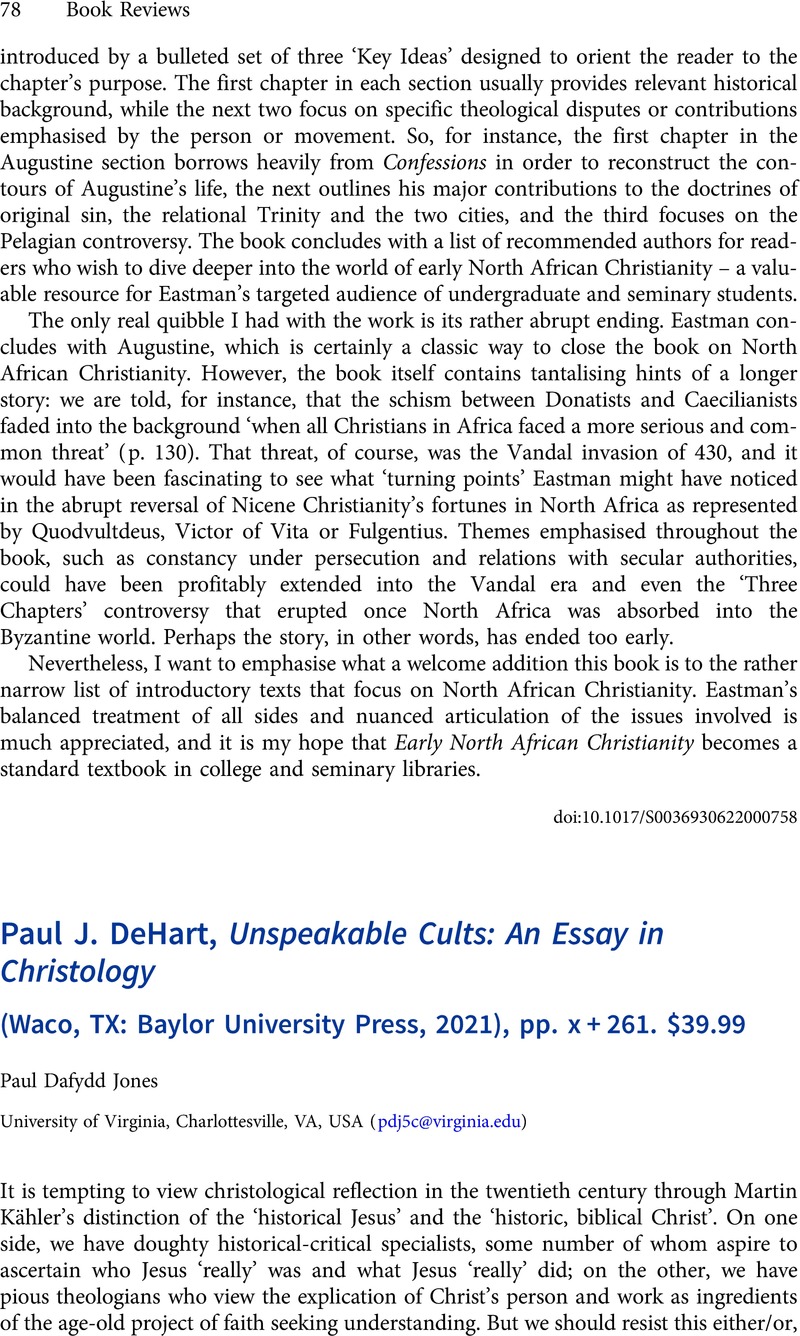No CrossRef data available.
Article contents
Paul J. DeHart, Unspeakable Cults: An Essay in Christology (Waco, TX: Baylor University Press, 2021), pp. x + 261. $39.99
Review products
Paul J. DeHart, Unspeakable Cults: An Essay in Christology (Waco, TX: Baylor University Press, 2021), pp. x + 261. $39.99
Published online by Cambridge University Press: 09 January 2023
Abstract
An abstract is not available for this content so a preview has been provided. Please use the Get access link above for information on how to access this content.

- Type
- Book Review
- Information
- Copyright
- Copyright © The Author(s), 2023. Published by Cambridge University Press



